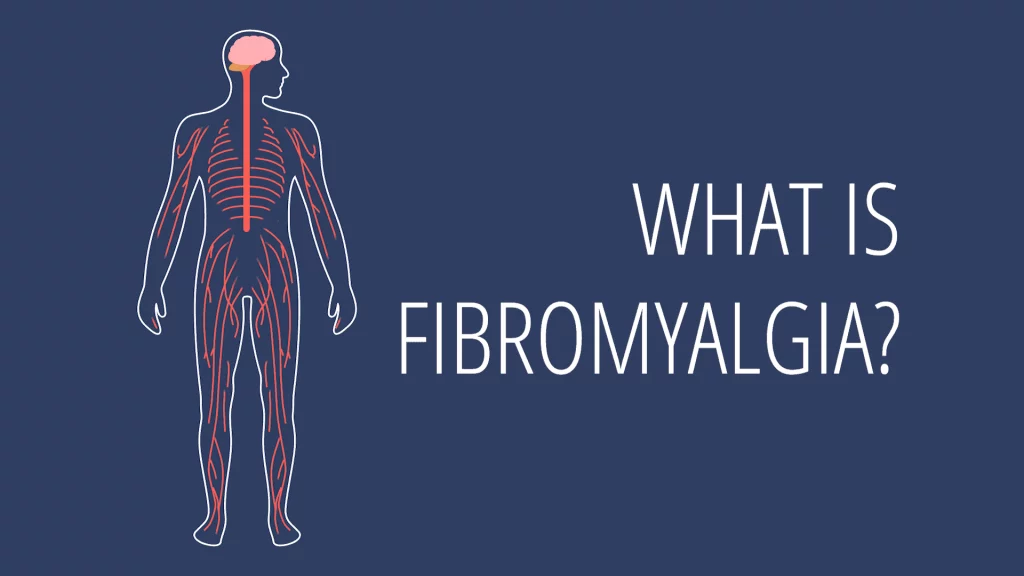Chronic diseases are often the most difficult to treat, as the medical community cannot solve the underlying condition. Fibromyalgia is one of the conditions that is extremely difficult to treat. This condition can greatly affect the quality of life of a patient. Fibroymyalgia can cause chronic pain in various parts of the body for long periods of time.
Fibromyalgia affects somewhere between 2 and 4 percent of the population. That translates into somewhere between 6 and 12 million people in the United States that are affected by the disease. Women are twice as likely as men to develop fibromyalgia for unknown reasons. This mysterious condition is often mistaken for a number of other diseases and conditions.
The medical community does not fully understand this disease. This lack of understanding causes considerable frustration for patients with the chronic condition. Even worse, the medical community has not been able to develop any effective therapies that solve the underlying cause. Patients who suffer from fibromyalgia are often left with few choices when conventional medical treatments do not work.
Researchers have been looking at alternative therapies in order to treat fibromyalgia. Stem cell therapy may be able to help patients that are suffering from fibromyalgia. Stem cells have a number of incredible properties that could treat the underlying cause of fibromyalgia. More research is needed, but patients all over the world are hopeful this therapy can lead
A deeper understanding of the disease can help you understand exactly how stem cells can help solve the underlying conditions of the disease and reduce symptoms. Let’s dive into the basics of fibromyalgia and how stem cell therapy may be able to help.
Fibromyalgia is a relatively new disease in the scope of diseases and conditions. The condition was first defined back in 1990 and it was updated in 2011. In the past, some medical professionals even questioned if fibromyalgia was a real condition. This was mostly due to a lack of understanding of the condition. Thankfully, fibromyalgia is now recognized as a real condition by several medical organizations.
Fibromyalgia is a chronic condition that is typically characterized by widespread pain throughout the body and sensitivity to any type of pressure. Often the condition is awakened by a physical trauma, surgery, infection, or psychological event. The medical community is not entirely sure why this occurs. Some researchers believe that the brain does not properly process pain signals, which leads to the widespread pain throughout the body.
Widespread pain in various parts of the body are not the only symptoms that patients with fibromyalgia experience. Symptoms can vary from patient to patient, but here are some of the most common symptoms that patients experience:
– Bladder problems
– Heightened sense of anxiety
– Chronic fatigue
– Pain throughout the body
– Difficulty sleeping
– Trouble concentrating and brain fog
There are many other symptoms that patients can experience, but these are the most common.
Symptoms of fibromyalgia are not enough to obtain a proper diagnosis sadly. Fibromyalgia can often be mistaken for depression, anxiety, or posttraumatic stress disorder as some of the symptoms are similar. Unfortunately, there are no diagnostic tests for fibromyalgia. Patients have to rule out every other other potential disease or condition before obtaining a fibromyalgia diagnosis. This can understandably cause considerable frustration in patients that they believe they have the condition.
Patients with fibromyalgia probably want to understand why they developed this condition. It can be incredibly difficult to live with the condition without having a basic understanding of why it happened to them.
Researchers still have a lot to learn about fibromyalgia. In the early stages of fibromyalgia research, the medical community studied various muscles groups that were affected by the condition. Researchers believed that if patients were experiencing pain and inflammation in their muscles, then the muscles had to be the source of the issue. It only makes sense that the medical community attempted to treat the muscles that were in pain.
Now, researchers believe that the muscles are functioning properly and are not the source of the problem. There is more consensus on what the underlying cause of fibromyalgia is. Some researchers have found that patients with fibromyalgia show signs of neuroinflammation in scans of the brain. The pain nerves in the brain can become irritated and inflamed.
Other researchers analyzed spinal fluid from fibromyalgia patients and found proteins that are linked to neuroinflammation. Researchers have also found that the size and shape of certain areas of the brain have changed in patients with fibromyalgia. This has led researchers to believe that fibromyalgia may be an autoimmune disease where inflammation is the main cause of the condition.
The main finding is that the brain is not properly communicating with the rest of the body. There can be long periods of time when the brain is not processing the correct information. This can potentially lead to the increased pain and sensitivity that patients experience.
Current Treatment Methods For Fibromyalgia
Currently, there is no cure for fibromyalgia. Treatments are limited to attempting to improve quality of life and manage the symptoms of the condition.
Medication
Some patients only deal with the symptoms of fibromyalgia for short periods of time. For these patients, over the counter pain medications, such as Tylenol, could relieve their pain until their symptoms subside. Antidepressants may help patients sleep better and balance the neurotransmitters that are malfunctioning in the nervous system. Generally, antidepressants can help patients with pain, depression, fatigue, and sleep disturbances.
Long-term side effects of antidepressants may outweigh the positives depending on the patient. Additionally, it can take up to three months before patients see the benefits of antidepressants. Anti-Seizure drugs may also help patients with fibromyalgia. This type of drug has the ability to block pain receptors from sending out signals to the brain. Some research suggests that anti-seizure drugs work in about 18% of fibromyalgia patients.
Therapy
Because the medical community does not fully understand fibromyalgia, medical professionals are more likely to suggest alternative therapies. Cognitive behavior therapy is one of those options. Research has shown that this type of therapy has a small, but beneficial effect on patients. Patients who underwent cognitive behavior therapy had less visits to their physicians, but had no significant effect on quality of life. However when this therapy was combined with other lifestyle changes, there was an improvement in symptoms.
Mind-body therapy can be effective for some patients. This type of therapy focuses on interactions between the brain, mind, body, and behavior. Patients are able to take an active role in their treatment when they use this type of therapy, which could improve their outlook on their condition. There is no evidence to suggest that this therapy can improve fibromyalgia symptoms.
Exercise
There is some solid evidence that exercise can improve sleep and may potentially reduce the pain associated with fibromyalgia. A combination of aerobic and strength training exercises is recommended for patients with fibromyalgia. Some patients respond better to aerobic and cardiovascular exercise, but researchers are not entirely sure why. Exercise is great for overall health, which may be why this treatment improves patient symptoms.
Some patients who are experiencing significant pain from the condition will have great difficulty keeping up a steady exercise regimen. This treatment method will not work for many patients with the condition.
None of these treatment methods address the underlying cause of fibromyalgia. Patients who continually suffer from the symptoms of fibromyalgia have turned to alternative therapies. Stem cell therapy may be a promising treatment option for patients who are suffering from fibromyalgia.
Stem Cell Therapy For Fibromyalgia
Stem cell therapy has been proposed as a potential treatment method for a number of different conditions and diseases. The possibilities that stem cells provide are nearly limitless as stem cells can differentiate into almost any cell type in the body.
Autoimmune disorders have been a target of stem cell studies for several years. Many studies have shown that stem cells have the potential to treat these types of disorders. Stem cells have immunoregulatory properties, which means that they can reduce the immune system’s response.
Reducing the immune system’s response may also reduce inflammation in various parts of the body. If stem cells can reduce the neuroinflammation in the brain, then the brain may be able to properly process the correct signals. The nervous system can properly communicate and the patient may be able to tolerate normal pressures and reduce their level of pain.
Stem cells have incredible regenerative properties. Stem cells release a number of important growth factors in the area that they are injected into. These growth factors encourage the body to replace damaged cells that no longer work. When a patient receives stem cell therapy, they may be able to repair and replace some of the damaged neurons throughout the body.
Little Research
As of now there is little research that showcases that use of stem cells to treat patients with fibromyalgia. There are a number of reasons why research has lagged behind in this area. Because the medical community does not have a complete understanding of the disease, it is much more difficult to create credible research. Additionally, the FDA’s stance on stem cell therapy has pushed researchers in other directions.
This has left fibromyalgia patients with few options, which is why many have turned to stem cell therapy. Even though there is not a mountain of evidence that showcases the efficacy of stem cell therapy for fibromyalgia, the rewards typically outweigh the risks for most patients.
There are some promising case studies that showcase the potential of stem cell therapy for fibromyalgia. Patients have been able to successfully reduce their symptoms through the use of stem cell therapy.
BioXcellerator Has Treated Patients With Fibromyalgia
At the BioXcellerator stem cell clinic in Colombia, our medical team has been able to help patients who were suffering from fibromyalgia.
Annie Nehmer traveled to Medellin to receive stem cell treatment for fibromyalgia and degenerative disc disease. She was hoping to reduce the chronic pain that she had been experiencing for multiple years. She was willing to travel all the way to Colombia in order to improve her quality of life even though she was initially hesitant about receiving care in Colombia. Annie was incredibly impressed with the quality of care she received at the BioXcellerator facility.
She claimed that her doctor knew more about fibromyalgia than any other doctor she had seen in the United States. That was certainly comforting to Annie who had never received medical care outside of the United States. Annie received stem cell therapy in order to treat both fibromyalgia and her degenerative disc disease. The results were promising
Even after 9 months Annie was experiencing less symptoms as compared to before the treatment. She hopes that the effects of the treatment will last for many years.
Golden Cells
Stem cell quality has been a concern for many patients and a valid concern at that. There are potential bad actors in the regenerative medicine industry that are looking to take advantage of patients with fibromyalgia. There was even a sham stem cell company that was offering stem cell treatments with dead stem cells. Ensuring that the stem cells are not only alive, but of the highest quality, is imperative.
In order to deliver the highest quality of care to our patients, the Bioxcellerator team developed a revolutionary process to ensure that our patients receive the highest quality stem cells. This process filters out the lower quality stem cells that are not as effective. We also test the stem cells for any deformities or diseases. This ensures that the stem cells we give our patients have the best chance to fight fibromyalgia. These ‘golden cells’ are the highest potency stem cells in the world.
Patients with fibromyalgia may be able to utilize stem cell therapy in order to treat the underlying condition. Reach out to your healthcare practitioner today to learn more about all of your treatment options for fibromyalgia. Your quality of life could improve through the use of stem cell therapy.


